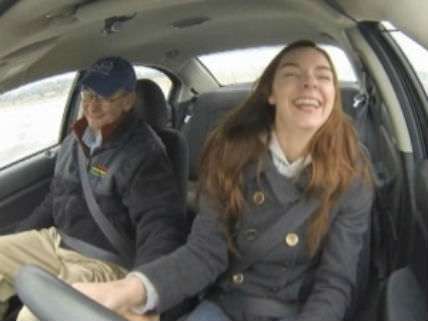Colorado Legislators Should Reject an Arbitrary Standard for Driving While Stoned

This week Colorado's House Judiciary Committee, keen to protect the public from newly legal pot smokers who might get behind the wheel after one puff too many, unanimously approved a bill that would allow convictions for driving under the influence of drugs (DUID) based on nothing more than blood tests indicating a THC level of five nanograms per milliliter or higher. Unlike a per se standard, which the state legislature has rejected twice before, the bill would not make people automatically guilty of DUID at five nanograms; instead that would be a "permissible inference." Defendants could avoid conviction by presenting evidence that they were not in fact impaired. Although that approach is better than a per se rule, the five-nangogram cutoff remains arbitrary. It is not supported by scientific evidence showing that people generally are impaired at that level, and tests suggest that many marijuana consumers drive competently at THC levels far above five nanograms. A few weeks ago, I described one such experiment, conducted by KIRO-TV, the CBS affiliate in Seattle, where drivers are subject to a five-nanogram per se standard as a result of I-502, the ballot initiative that legalized marijuana in Washington. Summarizing the results, KIRO's reporter noted that "our volunteers were able to smoke pot and drive safely at four times the legal limit."
In the hands of KCNC-TV, the CBS affiliate in Denver (a.k.a. CBS4), this striking refutation of the idea that five nanograms is equivalent to impairment somehow became an argument for rushing to establish an unvalidated standard. A CBS4 report that aired two days ago egregiously misrepresents the KIRO study, failing to note that all of the subjects successfully completed a driving course at THC levels much higher than five nanograms. They were also observed by a "drug recognition expert" from the Thurston County Sheriff's Office, who said he saw no reason to pull any of them over after their first round of pot smoking. After smoking repeatedly, all three eventually became too stoned to drive, but their blood test results at that point were nowhere near five nanograms.
CBS4 concedes that one volunteer, Jeff Underberg, "drove very cautiously" with a THC level four times the legal limit after smoking his first three-tenths of a gram. "While his driving was slow," KIRO reported, "it was still acceptable." According to the driving instructor who accompanied Underberg, "He did real well." But CBS4 inaccurately portrays the performance of the other two subjects. The heaviest cannabis consumer, a medical marijuana user named Addy Norton, did not fail the driving test until after consuming a total of 1.4 grams of pot and achieving a THC level of 58.8 nanograms, almost 12 times Washington's legal limit. Yet CBS4 shows her giggling at the wheel and knocking over a traffic cone, implying that she was impaired throughout the experiment. Another subject, Dylan Evans, smoked three-tenths of a gram, reaching a THC level of 26 nanograms, but still was "doing fine behind the wheel," according to the KIRO report. CBS4 falsely claims that Evans "drove off the course" at this stage, adding that "at one point the driving instructor had to grab the wheel," which did not happen until after the third round of pot smoking.
The impression left by the CBS4 story is so misleading that after watching it Westword blogger Michael Roberts, no fan of the five-nanogram standard, wrote that "the KIRO report shows three volunteers who smoke, then climb into vehicles and attempt to navigate a driving course—and mostly fail badly, by either going far too slow or swerving into cones set up to simulate roadways." In fact, all three subjects performed well after their first round of smoking, providing further evidence that the DUID bill moving through the Colorado legislature is based on a mistaken premise.
Rob Corry, a Denver attorney and marijuana activist, argues that a five-nanogram cutoff "completely ignores all the science," which indicates that "there is no particular number that determines impairment by THC across the population. THC affects everybody differently. There are many people who are not impaired at well over five nanograms, and there are some who are probably impaired at under five nanograms." Under current Colorado law, the burden is on the prosecution to show that a driver was under the influence. Blood test results are one kind of evidence prosecutors can use, along with clues like erratic driving and poor performance on roadside sobriety tests, but they are not conclusive. In a recent letter to legislators that Roberts quotes, Corry describes a client who tested at 10 nanograms but was nevertheless acquitted because the evidence showed he was "perfectly sober, driving well, and not a danger to anyone on the road that night." If the law is changed so that DUID is a "permissible inference" from a THC level of five nanograms or more, such defendants will stilll be able to argue that they were not impaired, but that case will be harder to make. "What it does is shift the burden of proof," Corry tells me. "A person coming into court is guilty until proven innocent….If you put a number on it, juries are going to latch onto that five-nanogram number, whether it's a permissible inference or a per se [standard], and the effect will be that innocent people are convicted, whether or not they're impaired."


Show Comments (31)